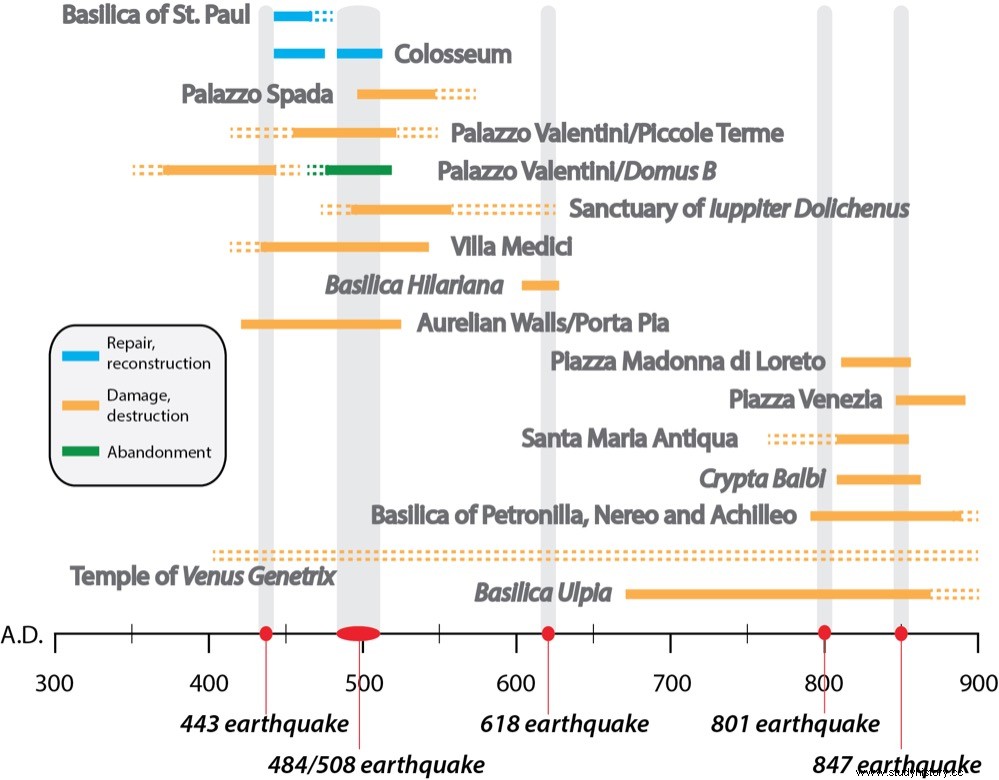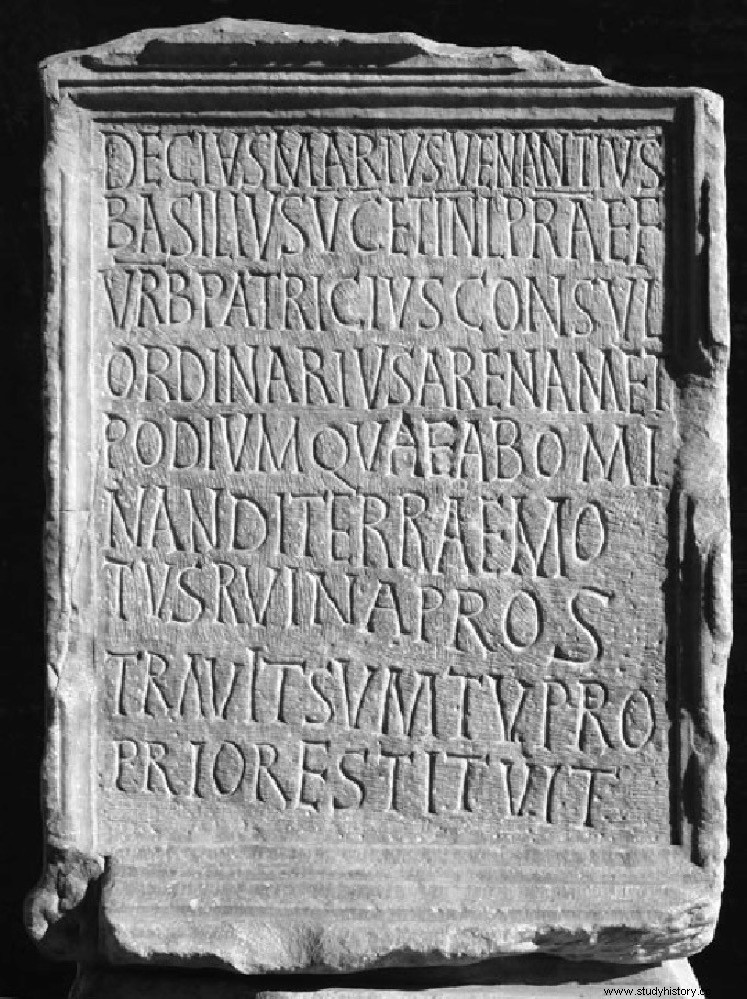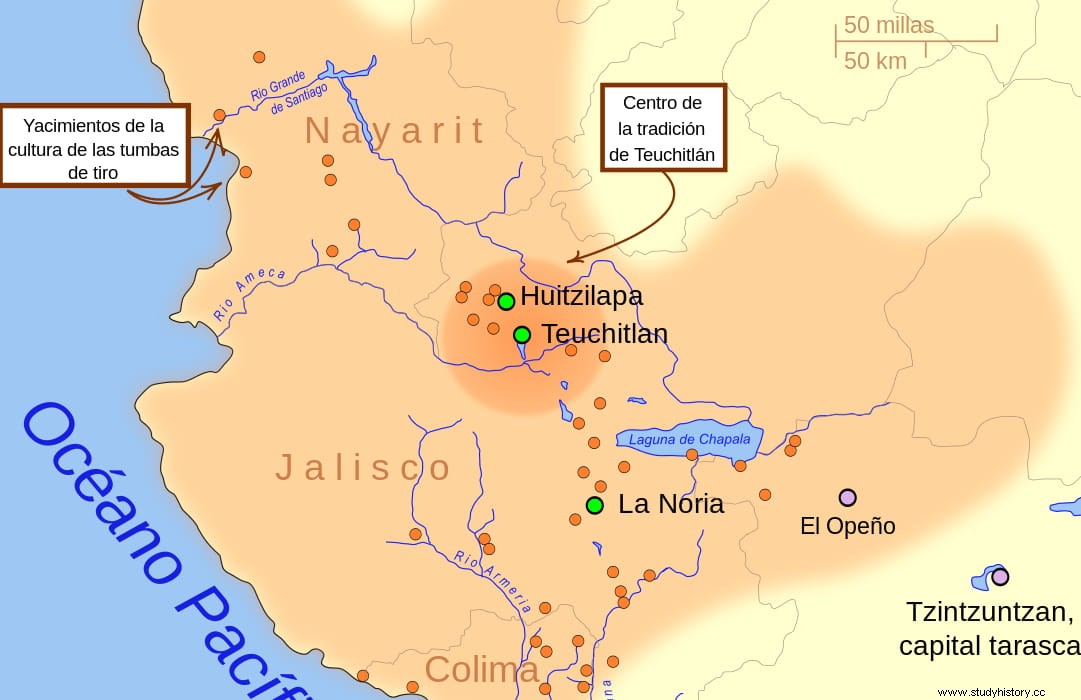It is known, from scientific and documentary evidence, that the city of Rome suffered up to five earthquakes between the end of Antiquity and the beginning of the Middle Ages. These events happened in the years 443, 484 or 508, 618, 801 and 847.
The first of them, from the year 443, is mentioned in the later Fasti vindobonenses , consular annals found in the Vindobonensis Manuscript and were first published in 1553.
It describes the collapse of statues and porticoes in the city that Lanciani identified as early as 1917 as belonging to the area between via Arenula and the Campo di Fiori , in the center of Rome. Other sources report the collapse of houses and public buildings, and even damage to the Colosseum.

The one that happened in 484 or 508 is known from inscriptions on two marble steles today located at the main entrance of the Colosseum itself. They mention important restorations of parts of the amphitheater (arenam et podium ) promoted by Decius Marius Venantius Basilius after an earthquake, which is described as disgusting will cause damage to them. These reforms have been confirmed by archaeological data in 1999.
According to experts, the uncertainty in the dating of the earthquake is due to the coincidence of the names of the Venantius who initiated the restoration. Two senators with the same name were consuls in different years; that is, in 484 and 508. This issue remains unresolved to this day. On the one hand, compared to other epigraphic sources, the reference only to Venantius as promoter of the works makes the 484 hypothesis a better option than the 508 one.

Now, a new study has identified the fault responsible for those earthquakes that devastated Rome. This is the Monte Vettore fault, which scientists had considered inactive until in 2016 it generated three major earthquakes, the first of which left almost 300 victims.
As reported by Nature , a team led by Paolo Galli of Rome's Civil Protection Department (and who had already published an article on Rome's historic earthquakes in 2013) dug trenches across the fault to look for ground disturbances caused by past earthquakes . The researchers found evidence of 6 major earthquakes in the last 9,000 years.
One of them occurred in the middle of the 5th century AD. and it could be the same earthquake that we mentioned at the beginning, which according to medieval historians, damaged the Colosseum and other buildings in Rome in the year 443 AD. C.

On average, the Monte Vettore fault has generated earthquakes greater than magnitude 6.5 every 1,800 years, so according to the authors, the earthquakes of 2016 should not have been so surprising.
Fonts
Nature / The awakening of the dormant Mt Vettore fault (2016 central Italy earthquake, Mw 6.6). Paleoseismic clues on its millennial silences (P. Galli, A. Galderisi, E. Peronace, B. Giaccio, I. Hajdas, P. Messina, D. Pileggi, F. Polpetta), doi.org/10.1029/2018TC005326 / Archaeoseismological evidence of past earthquakes in Rome ( 5th–9th century A.D.) used to quantify dating uncertainties and coseismic damage (Fabrizio Galadini, Giovanni Ricci, Emanuela Falcucci, Camilla Panzieri)
